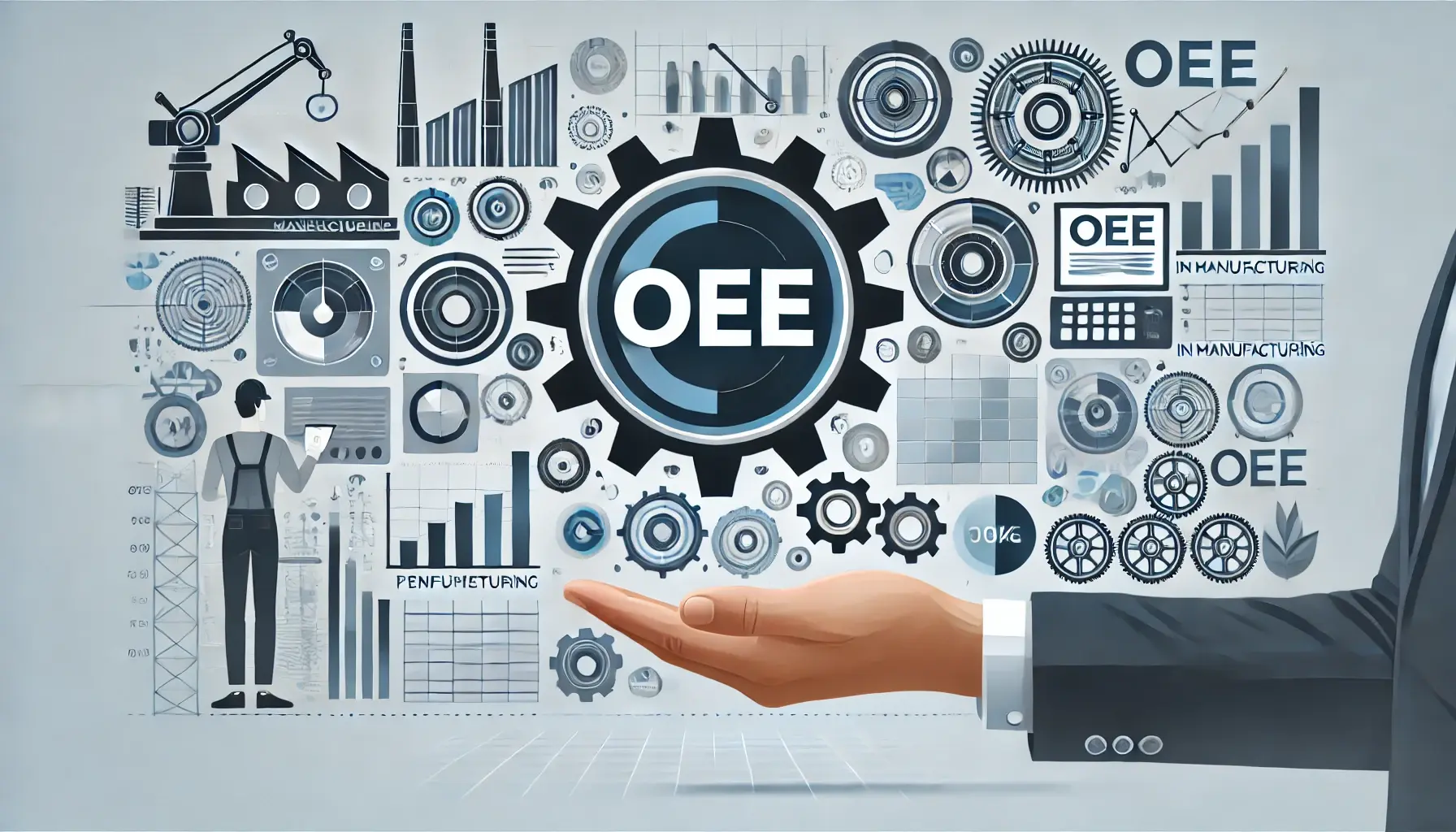Enterprise Risk Management (ERM): Strategischer Ansatz für Resilienz

What is Enterprise Risk Management (ERM)?
Enterprise Risk Management (ERM) refers to a holistic, strategic approach to identifying, assessing, managing, and monitoring all risks relevant to an organization. Unlike traditional risk management, which often occurs in isolated departments, ERM considers risks across organizational boundaries and places them in the broader corporate context.
Definition: ERM is a systematic process aimed at identifying, quantifying, and managing risks across an organization to both protect enterprise value and optimize the utilization of opportunities.
This comprehensive approach considers not only financial and operational risks but also strategic, regulatory, technological, and reputational risks. ERM shifts the focus from pure loss prevention to value-oriented risk management, understood as an integral part of corporate governance and strategy.
Digitalization of Production
- The fast track to digitalization
- Becoming more profitable – simply and quickly
- Efficiency through real-time data
- Key metrics for your success
- Optimization without investment costs
- OEE SaaS – booked today, ready tomorrow
Core Elements of an Effective ERM Framework
A robust ERM framework is built on several key components that together form a coherent system:
1. Risk Governance and Organization
The foundation of any ERM framework is a clear governance structure that defines responsibilities and decision-making processes:
- Board/Supervisory Board: Oversees risk strategy and culture
- Risk Committee: Advises on risk issues and monitors risk management activities
- Chief Risk Officer (CRO): Leads the implementation of the ERM strategy
- Risk Management Department: Coordinates ERM activities within the organization
- Business Units/First Line of Defense: Identifies and manages risks in daily operations
For successful implementation, integrating ERM into the existing organizational structure is critical. The Three-Lines-of-Defense Model has established itself as a best practice:
- First Line: Operational management that directly manages risks
- Second Line: Risk management and compliance functions that monitor and advise
- Third Line: Internal audit that conducts independent reviews
2. Risk Strategy and Risk Appetite
The risk strategy defines the fundamental approach to risks and must align with the corporate strategy:
- Risk Philosophy: Basic attitude toward risks
- Risk Appetite: Total amount of risk the organization is willing to accept
- Risk Tolerances: Acceptable ranges of variation for specific risk categories
- Risk Limits: Specific quantitative boundaries for individual risk positions
The risk appetite is typically defined by the board and can be expressed both qualitatively and quantitatively. It provides the framework for all subsequent risk management decisions.
3. Risk Assessment and Analysis
Systematic identification and assessment of risks include:
- Risk Identification: Recognizing potential risks through workshops, interviews, and analyses
- Risk Assessment: Qualitative and quantitative evaluation of likelihood and impact
- Risk Prioritization: Focusing on the most significant risks (Key Risks)
- Risk Aggregation: Consolidating individual risks into an overall risk profile
- Scenario Analyses: Examining stress scenarios and their impacts
Modern ERM approaches leverage advanced methods such as Monte Carlo simulations, Bayesian networks, and AI-supported forecasting models to gain deeper insights into complex risk interrelationships.
4. Risk Management and Monitoring
Following identification and assessment, active risk management includes:
- Risk Avoidance: Exiting high-risk activities
- Risk Mitigation: Measures to reduce likelihood or impact
- Risk Transfer: Transferring risks to third parties (e.g., through insurance)
- Risk Acceptance: Deliberately accepting certain risks
- Continuous Monitoring: Regularly reviewing the risk profile and effectiveness of measures
The choice of appropriate management measures depends on the cost-benefit ratio and the strategic significance of the risk.
5. Risk Communication and Culture
An often underestimated but critical success factor for ERM is establishing a healthy risk culture:
- Transparent Communication: Open exchange about risks at all levels
- Clear Responsibilities: Every employee understands their role in risk management
- Incentive Systems: Encouraging risk-aware behavior through appropriate incentives
- Training and Awareness: Ongoing education on risk topics
- Tone from the Top: Leadership setting an example
A strong risk culture promotes proactive risk management and enhances the organization’s resilience to unexpected events.
The Evolution of ERM: From Compliance to Strategic Enabler
The development of Enterprise Risk Management can be divided into three phases:
Phase 1: Compliance-Oriented ERM (2000s)
- Focus on regulatory requirements (SOX, Basel II, Solvency II)
- Siloed thinking in risk functions
- Annual risk assessments and static reports
- Primary goal: Meeting external requirements
Phase 2: Integrated ERM (2010s)
- Consolidation of various risk functions
- Establishment of ERM frameworks (COSO, ISO 31000)
- Risk quantification and aggregation
- Primary goal: Protecting enterprise value
Phase 3: Strategic ERM (Present and Future)
- Close alignment with corporate strategy and performance
- Data-driven, dynamic approach
- AI and advanced analytics for risk forecasting
- Primary goal: Value creation and support for strategic decisions
This evolution reflects a changing understanding: from ERM as a necessary compliance measure to a strategic competitive advantage.
Digitalization of Production
- The fast track to digitalization
- Becoming more profitable – simply and quickly
- Efficiency through real-time data
- Key metrics for your success
- Optimization without investment costs
- OEE SaaS – booked today, ready tomorrow
ERM in the Digital Age: The Role of Technology
Digital transformation has fundamentally changed Enterprise Risk Management and opened new opportunities:
Cloud-Based ERM Solutions
Modern ERM systems leverage cloud advantages:
- Centralized Data Storage: Unified risk database for the entire organization
- Real-Time Monitoring: Continuous tracking of risk indicators
- Scalability: Adapting to growing data volumes and requirements
- Collaboration: Improved cooperation across departments and locations
- Cost Efficiency: Reduced IT infrastructure costs
The cloud enables flexible, location-independent use of ERM tools and promotes integration into existing enterprise systems.
AI and Machine Learning in Risk Management
Artificial intelligence is revolutionizing risk detection and assessment:
- Pattern Recognition: Identifying subtle risk indicators in large datasets
- Early Warning Systems: Automatic detection of anomalies and potential risks
- Predictive Analytics: Forecasting risk scenarios based on historical data
- Natural Language Processing: Analyzing unstructured data (news, social media) for risk signals
- Automated Risk Assessment: Faster and more objective risk evaluations
With AI, companies can shift from reactive to proactive risk management, identifying risks before they materialize.
Big Data and Advanced Analytics
The availability of vast data volumes offers new possibilities for deeper risk analysis:
- Integrated Risk Analyses: Linking internal and external data sources
- Scenario Modeling: Complex simulations of potential risk trajectories
- Risk Aggregation: Holistic understanding of risk correlations
- Dashboards and Visualization: Intuitive presentation of complex risk information
- Self-Service Analytics: Democratizing risk data for decision-makers
Data analytics enables a deeper understanding of risk drivers and supports informed decision-making.
Building a Robust ERM Framework: Step by Step
Implementing an effective ERM system requires a structured approach:
- Establish Foundations
- Secure leadership support
- Define ERM vision and goals
- Establish governance structure and responsibilities
- Allocate initial budget and resources
- Develop Risk Strategy
- Determine enterprise-wide risk appetite
- Define risk taxonomy and categories
- Establish risk assessment criteria and methodology
- Document policies and processes
- Conduct Risk Assessment
- Organize enterprise-wide risk identification
- Assess risks based on likelihood and impact
- Prioritize risks and identify Key Risks
- Create risk heatmaps and profiles
- Implement Management Measures
- Develop risk mitigation strategies
- Assign responsibilities for measures
- Define timelines and milestones
- Provide resources for risk mitigation
- Build Monitoring System
- Define Key Risk Indicators (KRIs)
- Establish reporting structures
- Define escalation processes
- Plan regular reviews
- Continuous Improvement
- Evaluate the effectiveness of the ERM system
- Gather feedback from stakeholders
- Optimize processes and methods
- Stay aligned with new best practices
A successful ERM implementation process is iterative and continuously adapts to changing business and environmental conditions.
Digitalization of Production
- The fast track to digitalization
- Becoming more profitable – simply and quickly
- Efficiency through real-time data
- Key metrics for your success
- Optimization without investment costs
- OEE SaaS – booked today, ready tomorrow
Industry-Specific ERM Requirements
The design of ERM varies by industry and its specific risk profiles:
Financial Services
- Regulatory Framework: Basel III/IV, Solvency II, DORA
- Key Risks: Credit, market, liquidity, and operational risks
- Particularities: Strictest regulatory requirements, quantitative risk models, stress tests
Manufacturing
- Regulatory Framework: ISO 31000, industry-specific safety standards
- Key Risks: Supply chain, operational, environmental, and product risks
- Particularities: Focus on operational excellence and business continuity
Healthcare
- Regulatory Framework: HIPAA, GDPR, industry-specific quality standards
- Key Risks: Patient safety, compliance, technology, cyber risks
- Particularities: High ethical standards, special data protection requirements
Technology Companies
- Regulatory Framework: GDPR, CCPA, sector-specific regulations
- Key Risks: Cyber, innovation, reputational, and compliance risks
- Particularities: Fast-paced environment, high innovation speed
Energy Sector
- Regulatory Framework: Environmental laws, safety regulations, ESG standards
- Key Risks: Safety, environmental, regulatory, and geopolitical risks
- Particularities: Long-term investment cycles, high capital intensity
Industry-specific customization of the ERM framework is critical to its effectiveness and acceptance.





